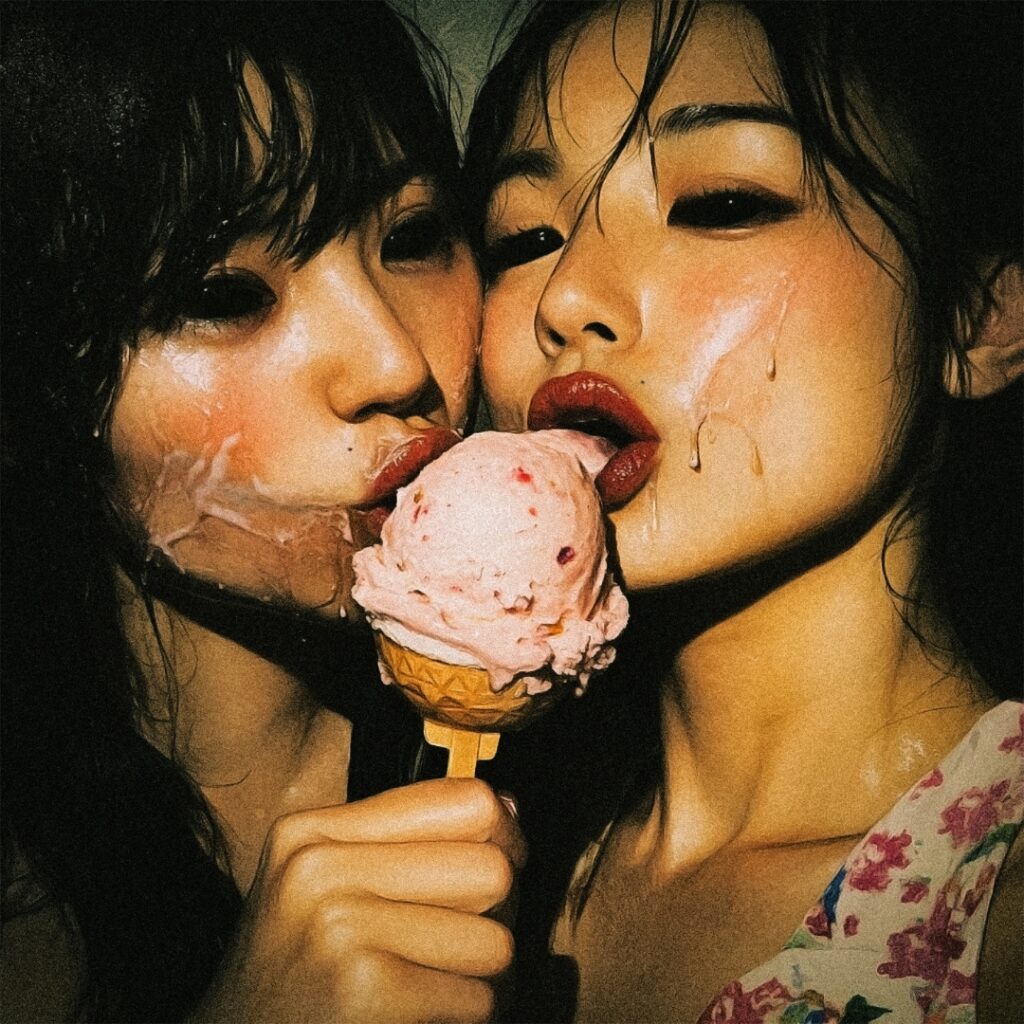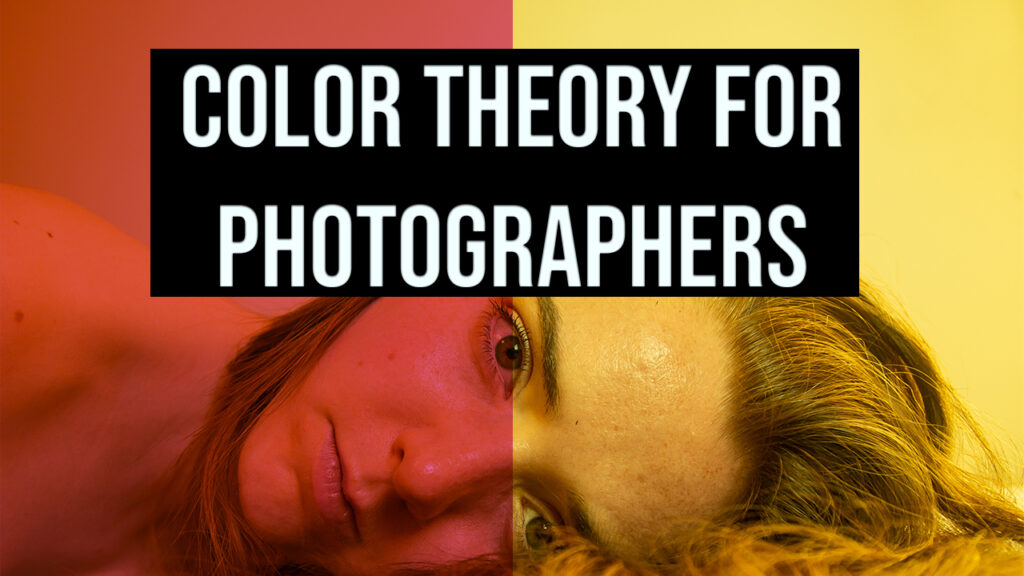
In the world of art, certain pieces transcend the boundaries of mere visual appeal, pulling viewers into a realm that challenges their emotions, beliefs, and understanding of themselves. “Forbidden Cravings” is one such artwork. Through its captivating depiction of two women sharing a melting ice cream, this piece explores themes of desire, the shadow self, and the forbidden—concepts that resonate deeply within the human experience. This blog will examine the elements that make “Forbidden Cravings” a profound work of art, from its psychological implications inspired by Carl Jung’s theories to its aesthetic choices and symbolic depth.
The First Impression: Seduction and Intrigue
Upon first glance, “Forbidden Cravings” is visually arresting. The shared ice cream between the two women is a bold focal point, an unexpected object of desire that brings a subtle sensuality to the scene. Their slightly disheveled appearance, the melting ice cream, and the glistening textures evoke a raw, almost animalistic hunger. The intimacy displayed between the figures draws viewers in, compelling them to question the nature of the interaction and the emotions underlying it.
The initial impact of “Forbidden Cravings” is one of intrigue and discomfort. It’s a scene that feels simultaneously innocent and charged with a kind of primal allure. By presenting this juxtaposition, the artwork invites viewers to confront their own reactions and feelings—reactions that often reveal more about the viewer than the art itself.
Symbolism of the Ice Cream: Fleeting Pleasure and Decay
The ice cream in “Forbidden Cravings” serves as more than just an object of shared consumption. Its melting state represents the transient nature of pleasure, a reminder of the impermanence of satisfaction. This symbolism is profound in its simplicity: just as the ice cream melts away, so does the fleeting nature of human desires and gratifications. The piece captures a moment of indulgence, a brief escape into the sensory world where consequences seem irrelevant—until the pleasure fades, leaving behind traces of something lost or consumed.
The choice of ice cream, rather than another form of sustenance, is intentional. Ice cream is universally associated with indulgence, a treat reserved for moments of hedonism. It’s sweet, creamy, and inherently pleasurable, yet it melts, decays, and disappears, leaving nothing but a sticky residue. This metaphor reflects the human pursuit of pleasure and the way it often slips through our fingers, leaving us longing for more or facing the consequences of overindulgence.
The Shadow Self: A Jungian Analysis
The concept of the “shadow self,” introduced by psychologist Carl Jung, is integral to understanding “Forbidden Cravings.“ Jung believed that each person has a shadow—an unconscious part of the psyche composed of repressed thoughts, desires, and instincts that society deems unacceptable. The shadow is the darker side of the individual, containing impulses and qualities that are often hidden from conscious awareness but remain active in shaping behavior and thought.
In “Forbidden Cravings,” the shadow is brought to life through the expressions, body language, and sensual undertones of the scene. The two figures appear disconnected from societal norms, lost in their moment of shared desire. Their intense gazes and the suggestive nature of their interaction reflect the unrestrained, unapologetic embrace of their instincts. This represents the shadow in its purest form—a side of the self that is rarely acknowledged, yet profoundly human.
By bringing the shadow to the forefront, “Forbidden Cravings” compels viewers to confront their own repressed desires and instincts. It serves as a mirror, reflecting the aspects of the self that are often kept hidden. For some, this might evoke discomfort or even repulsion, while for others, it may offer a sense of liberation and self-recognition. This dual reaction is the power of the shadow—simultaneously alluring and unsettling, drawing us closer while pushing us away.
Desire and the Forbidden: Exploring Taboo Themes
Desire is a fundamental aspect of human experience, yet it is often tinged with elements of guilt, shame, or secrecy. Society places boundaries on what is deemed acceptable or respectable, and these boundaries shape how individuals express or suppress their desires. “Forbidden Cravings” taps into this tension, exploring the allure of what is forbidden and the pleasure found in transgression.
The artwork’s depiction of two women in an intimate moment speaks to the broader theme of forbidden love, sensuality, and the breaking of taboos. Whether intended to represent a romantic connection or a metaphor for shared indulgence, the closeness between the figures challenges viewers to question their own boundaries and biases. It pushes against societal norms, urging viewers to consider how they view relationships, desire, and intimacy.
In art, the exploration of taboo themes serves to break down societal constraints, allowing individuals to explore parts of themselves that they might otherwise suppress. “Forbidden Cravings” is a testament to this power, providing a space where viewers can encounter the forbidden without judgment, fear, or shame. Through this experience, the artwork encourages a deeper understanding of desire, one that is not limited by societal expectations but rather rooted in the authenticity of the human experience.
Aesthetic Choices: Texture, Tone, and Lighting
The aesthetic choices in “Forbidden Cravings” enhance its emotional and psychological impact. The texture of the piece, with its gritty, almost tactile quality, emphasizes the rawness of the scene. The melting ice cream and the sheen on the figures’ faces suggest a sensory overload, an indulgence in the physical experience. This texture mirrors the artwork’s themes, making the intangible aspects of desire and shadow feel more visceral and real.
The lighting and color palette are equally significant. Dark, muted tones create an intimate atmosphere, one that feels both inviting and claustrophobic. The low lighting adds a layer of mystery, casting shadows that obscure certain details while highlighting others. This interplay between light and shadow reflects the dual nature of the human psyche—the conscious and the unconscious, the known and the unknown.
By combining these aesthetic elements, “Forbidden Cravings” becomes a multi-sensory experience. Viewers can almost feel the warmth of the lights, the coldness of the melting ice cream, and the intensity of the figures’ gazes. This sensory engagement is crucial to the artwork’s impact, as it bridges the gap between the visual and the emotional, drawing viewers deeper into the scene.
Art as a Mirror: Reflecting the Viewer’s Inner World
One of the most powerful aspects of “Forbidden Cravings” is its ability to serve as a mirror for the viewer’s inner world. Art that delves into themes of desire and shadow often evokes strong, personal reactions, as it taps into universal experiences and emotions that many find difficult to express. In this way, “Forbidden Cravings” becomes more than just an artwork; it is a catalyst for introspection and self-discovery.
Viewers may find themselves asking questions about their own desires, the boundaries they place around pleasure, and the aspects of themselves they choose to keep hidden. For some, the artwork may evoke memories of moments when they, too, felt the pull of the forbidden or the allure of indulgence. For others, it may raise questions about their relationship with desire and the parts of themselves that society teaches them to suppress.
By confronting these questions, viewers can gain a deeper understanding of their own shadow selves. They can begin to reconcile the parts of themselves that feel at odds with societal expectations, finding a sense of acceptance and integration. In this way, “Forbidden Cravings” offers not just a visual experience, but a journey toward self-awareness and personal growth.
Embracing the Shadow Through Art
“Forbidden Cravings” stands as a testament to the power of art to evoke, challenge, and transform. Through its exploration of desire, the shadow self, and the forbidden, it invites viewers to confront parts of themselves that are often left unexamined. The artwork’s aesthetic choices, from its textures to its lighting, enhance its impact, creating an experience that is both visually captivating and emotionally resonant.
For lovers of art who seek pieces that go beyond the surface, “Forbidden Cravings” offers a unique journey into the complexities of the human psyche. It is a work that speaks to the universal aspects of desire and shadow, providing a space where viewers can encounter their own humanity without fear or judgment. In the end, “Forbidden Cravings” reminds us that art is not just a reflection of the world around us, but a reflection of the world within—a place where we can confront, understand, and embrace the parts of ourselves that make us whole.

Insinuant Magazine: Intimacies Unveiled: Shadows of Desire - Erotic Art Book
Step into a World of Shadows, Light, and Unveiled DesiresIntimacies Unveiled: Shadows of Desire isn’t just a book—it’s an invitation. This isn’t for the casual reader. It’s for those who crave something deeper, who understand that art can do more than decorate a wall or a coffee table. This…

Insinuant Magazine: LOLLA MAGAZINE
Lolla is a breathtaking Brazilian beauty who loves showcasing her body. Within the pages of this magazine, you'll discover her boldest and uncensored photos, all captured in stunning high quality. Every shot was taken by the talented photographer Felipe Marino, founder of Insinuant Magazine. By…




